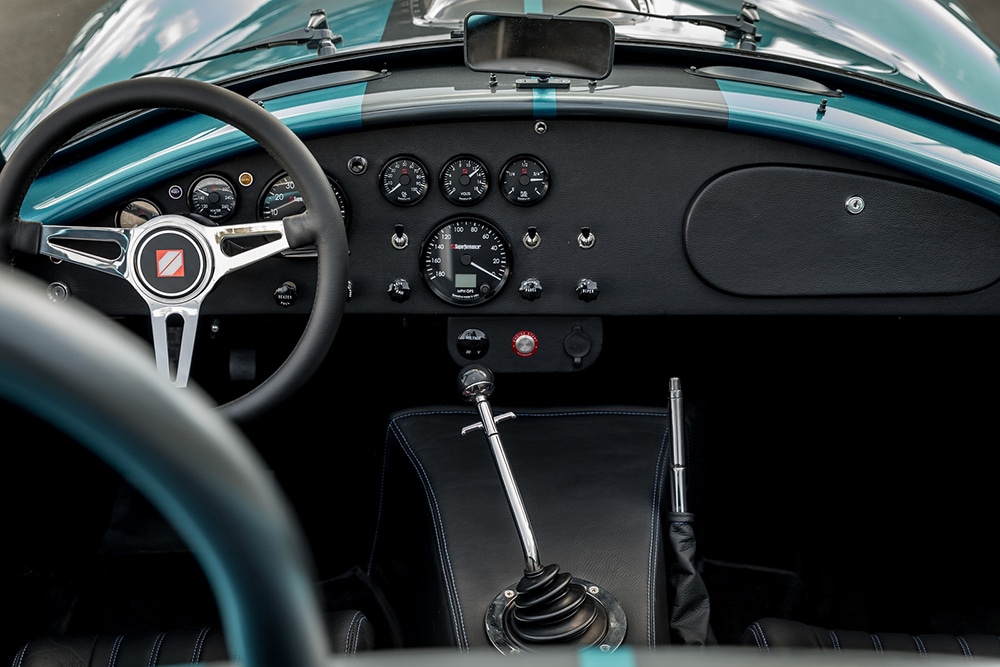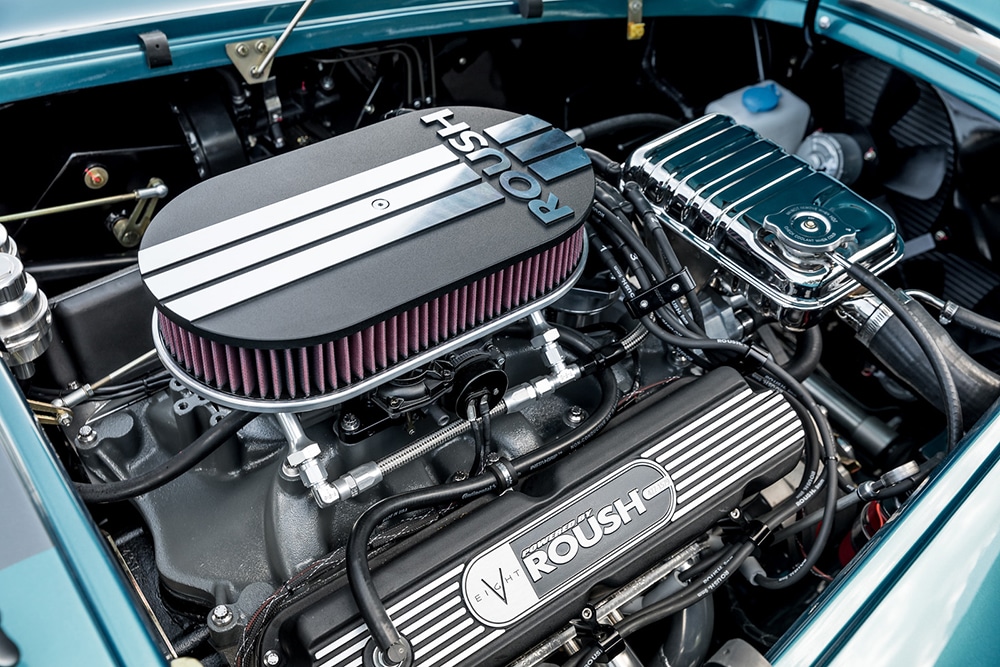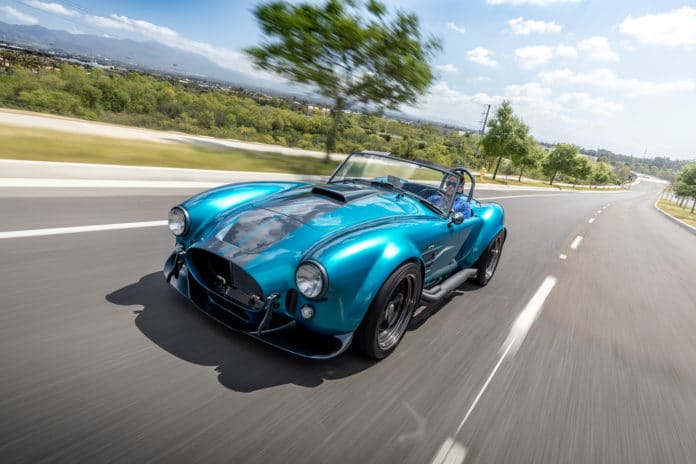Shelby Cobra, created by an American automotive designer Carroll Shelby in the mid-60s, has been one of the most frequently copied sports cars for decades. Dozens of versions are made, in all sorts of qualities, around the world.
The Californian Superformance, specialized in the manufacture of replicas of models from the 60s, has already officially purchased the license from Carrol Shelby – and has now released all-new Superformance MKIII-R that looks distinctly modern in some details. It is the perfect combination of a classic old-school car with a touch of modern style.
The Superformance MkIII-R can accommodate different Ford V8 blocks to motorize it, including the seven-liter, V8 Roush tuning engine developing some 510 hp and 700 Nm, or a more powerful version of more than 560 hp and 745 Nm. They can be combined with a manual gearbox 5-speed Tremec or a 4-speed Ford transmission.
The most striking is obviously the air deflector at the front of the car, which is a clearly modern-looking detail, but the diffuser-like design at the rear also looks quite alien to the Cobra’s 1950s-inspired shapes. The other details, on the other hand, bring the style of the original Shelby Cobra more: round instruments, hand-sewn leather upholstery, and grittier appearance.

Superformance does not specify the performance of this MkIII-R, whose occupants will benefit from a cabin with a retro look. There are custom French-stitched seats with body color accented thread and the Dash equipped with the new Superformance Electronic Gauges. The MKIII-R standard equipment features: Power Steering, LED Headlights, 18″ Wheels, and is available in almost any color imaginable and can be ordered with other Interior choices as well. There are push-button ignition and six-piston front brakes.

Even with the engine, the 1,840 lbs (834.6 kg) MKIII-R faithfully brings the character of the Shelby Cobra in spite of a few modern features. Like other Superformance cars, this Shelby Cobra replica sells without an engine for $79,900, and whose production should not exceed twenty units per year.
